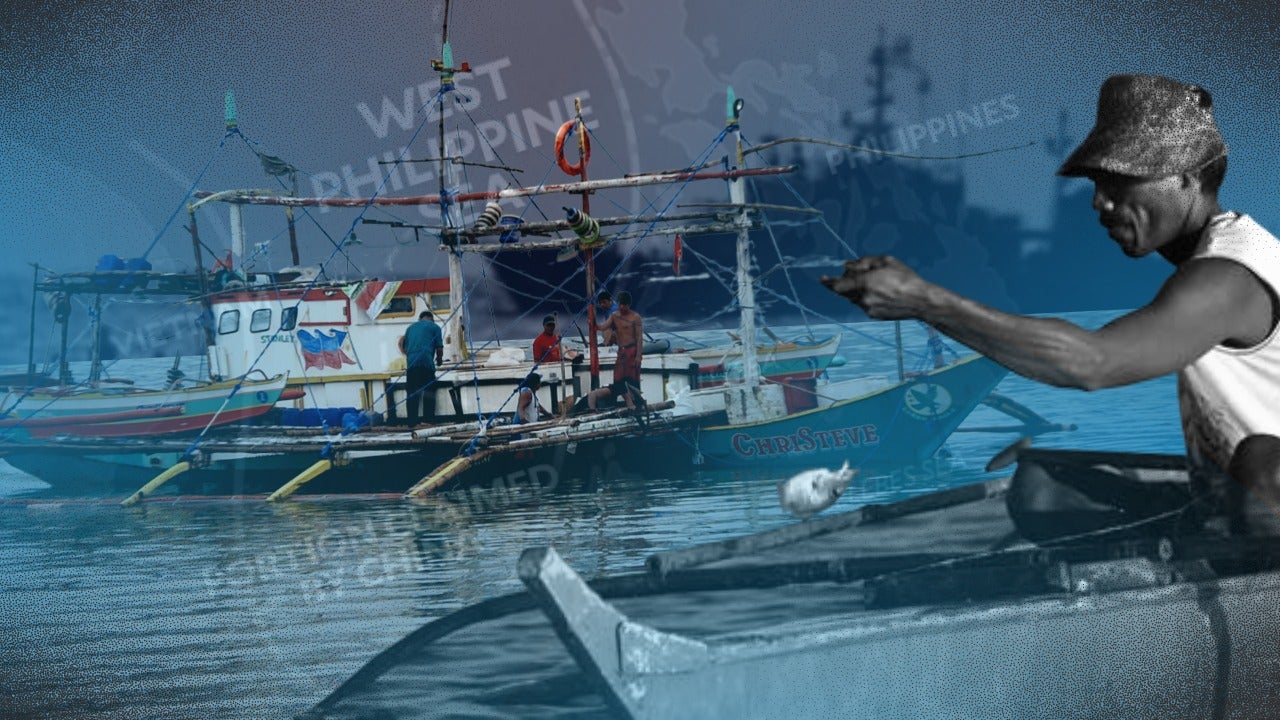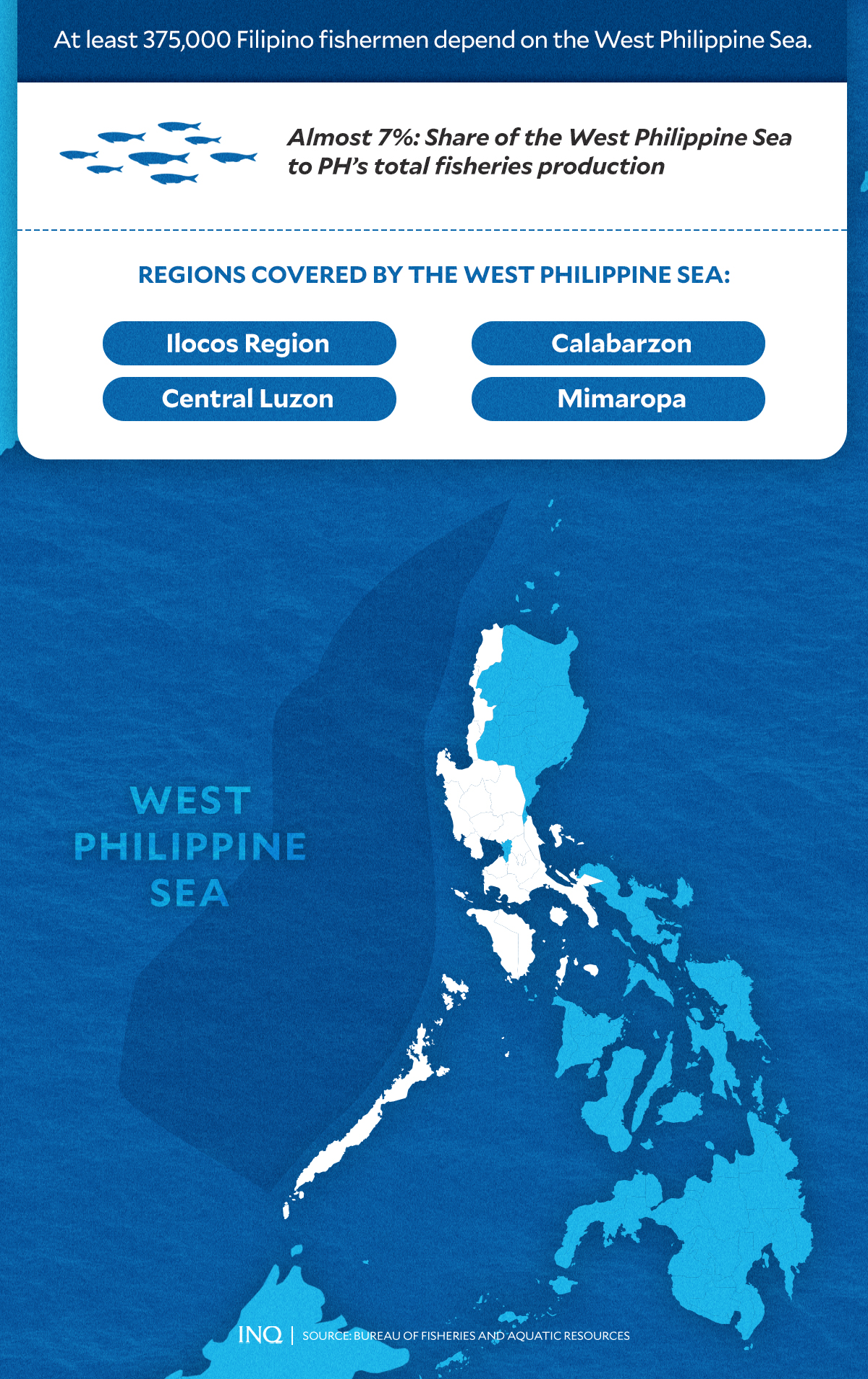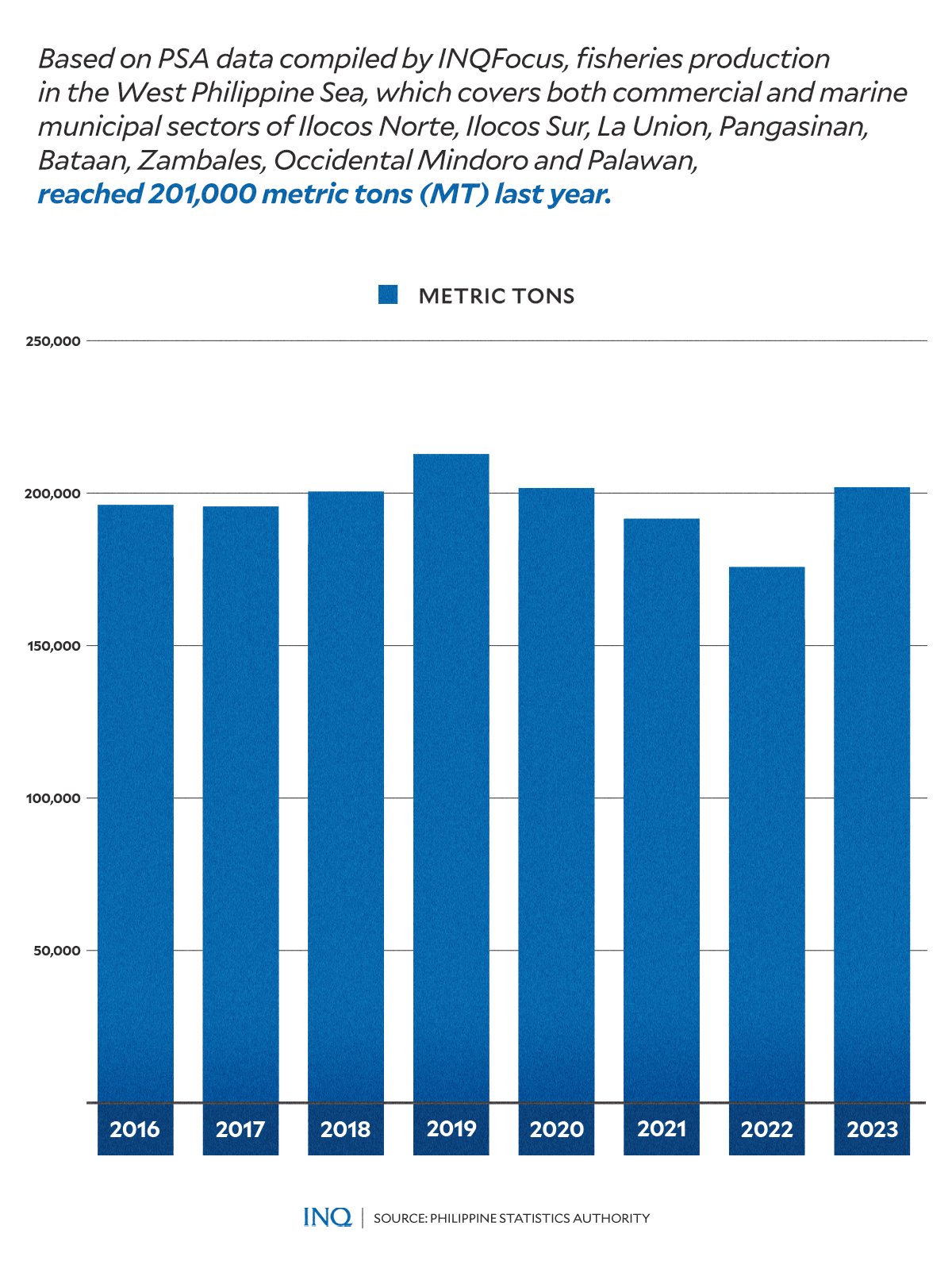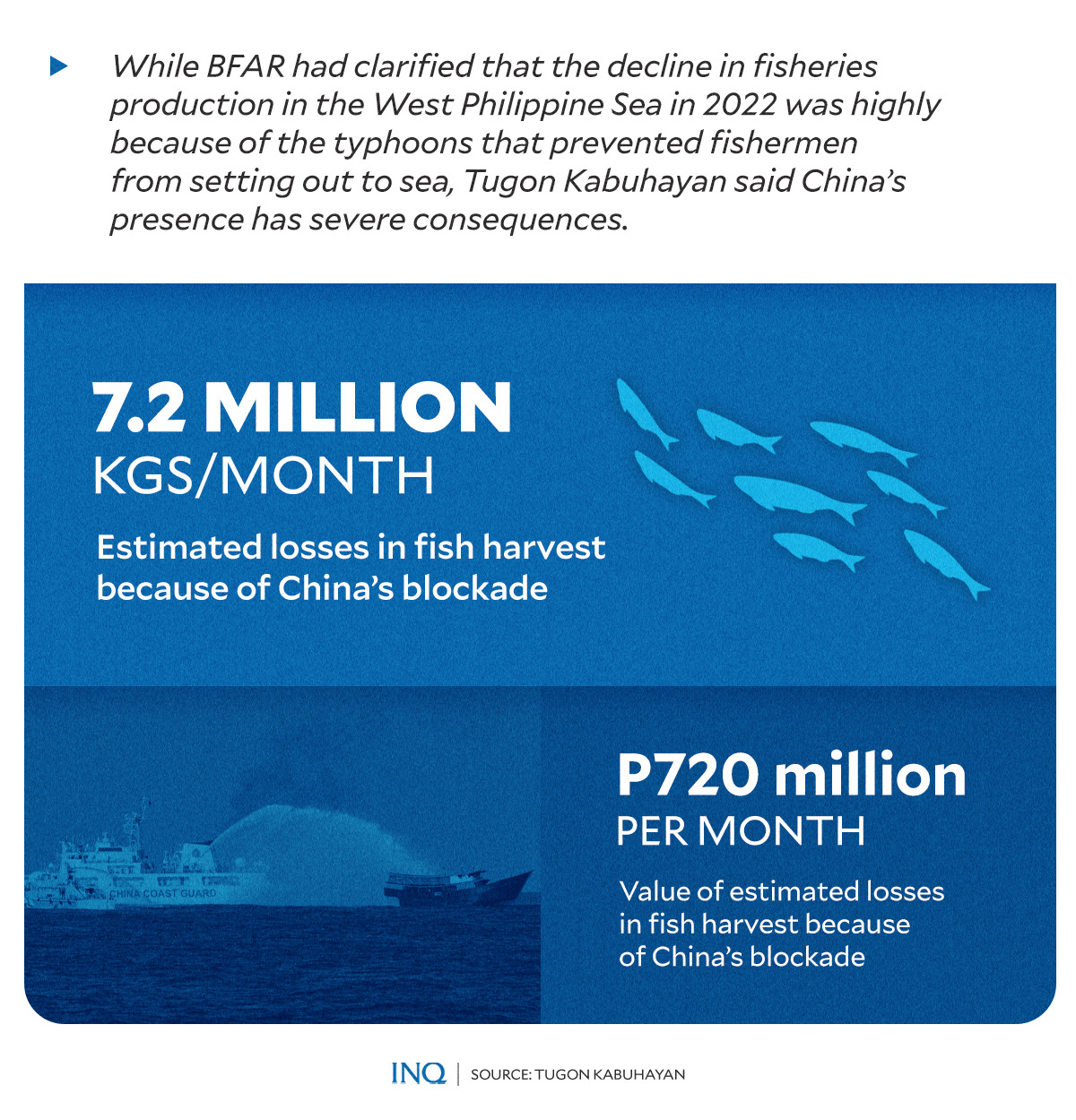MANILA, Philippines-“Para [kaming] magnanakaw [sa sarili naming bayan].”
This was how Leonardo Cuaresma, a fisherman in Masinloc, Zambales, expressed anger over China’s aggression in waters inside the Philippines’ exclusive economic zone (EEZ), the West Philippine Sea.
He said that since China has been preventing them from sailing within the Philippines’ EEZ for livelihood, they felt like they were being treated as thieves though they have all the right to access the area and fish.
He said in a public consultation with the House Committee on National Defense and Security late last month that since the Scarborough Shoal standoff between the Philippines and China in 2012, “malaki na ‘yung naging pagbabago sa pangingisda ng ating mga kababayan (a lot has already changed in the way Filipinos fish for livelihood).”
Cuaresma pointed out that “we are already experiencing China’s aggressiveness,” especially in Scarborough Shoal, which is locally called Bajo de Masinloc, or Panatag Shoal.
The Permanent Court of Arbitration (PCA) had declared the area as a common fishing ground that should be accessible to both Filipino and Chinese fishermen. The area, though, is well within the Philippines EEZ, which grants priority to Filipinos in resource extraction.
RELATED STORY: 8 PH Navy men injured; one had finger cut off
Scarborough Shoal, a reef that borders a lagoon, is located 222 kilometers (km) off Masinloc, Zambales and 1,100 km from China’s Hainan Island. However, the feature has been effectively controlled by China, which has maintained its military presence at the shoal since 2012, the Asia Maritime Transparency Initiative said in its website.
Help from gov’t
As pointed out by marine scientists Hazel Arceo et. al. and reiterated by the People’s Development Institute, WPS, including Scarborough Shoal, is one of the most important fishing grounds in the Philippines, with “substantial contribution to the national economy and to the social and economic wellbeing of coastal communities” that depend on it.
This was the reason the government has committed to extend constant ayuda, or assistance to almost 385,000 Filipinos who rely on these fishing grounds for their livelihood.
Last year, the Bureau of Fisheries and Aquatic Resources (BFAR) even started the Livelihood Activities to Enhance Fisheries Yield and Economic Gains from the West Philippine Sea (Layag WPS).
READ: Netting progress, hope: BFAR launches project to aid WPS fisherfolk
The intervention, BFAR explained, will extend help to fishermen in Ilocos Region, Central Luzon, Calabarzon, Mimaropa, and even Metro Manila, stressing that last year, at least P80 million has been set aside for the program that already assisted 90 percent of Filipinos who depend on fishing at the WPS for livelihood.
But for fishermen, who belong to the poorest segment of the Philippine population with a poverty incidence of 30.6 percent, ayuda, or aid, is not the answer to their plight. Aid will never be enough to keep them afloat, much less uplift them from poverty, according to fishermen leaders.
They said the government ayuda does not address the cause of their problems. “It’s only like first aid,” said Noli delos Santos, a fisherman in Sta. Cruz, Zambales.
READ: DFA blasts China over ‘illegal, aggressive’ actions in West PH Sea
Delos Santos, who cried while relating the Filipino fishermen’s ordeal with China aggression, said “kung tutuusin, ang ayuda, hindi namin kailangan ‘yan kung malaya kaming makapangingisda sa aming [sariling] bayan (after all, we won’t need ayuda from the government if we can sail and catch fish without experiencing harassment in our own country).”
“Tulungan niyo kami. Hindi naman po kami tamad na mangingisda, masipag po kami (Help us. We are not lazy fishermen, we are all hardworking),” he said at the public consultation in Masinloc, Zambales, which was part of the investigation into the alleged “Gentleman’s Agreement” on the WPS between the Philippines and China.
Fish catch in WPS
Based on data from the Philippine Statistics Authority (PSA), catch in the WPS, which has a share of seven percent to total fisheries production, grew from 196,156 metric tons (MT) in 2016 to 201,948 MT last year, with BFAR saying that government interventions have significantly contributed to the increase in fisheries output in the regions covered by the WPS.
The data, compiled by INQUIRER.net, highlighted recorded fish catch by commercial and marine municipal sectors in the provinces of Ilocos Norte, Ilocos Sur, La Union, Pangasinan, Bataan, Zambales, Occidental Mindoro, and Palawan. The output last year was also higher than the 175,784 MT in 2022.
RELATED STORY: Fish production in PH down 60-80% amid West Philippine Sea issue, overfishing
But while the government has previously attributed decreases in fisheries production to typhoons, which essentially prevented fishermen from setting out to sea, NGO data and fishermen’s experiences are pointing out that China’s presence in the WPS has disastrous consequences, especially on the poor.
As stressed by Jerry Mundia, a local official and fisherman in Sta. Cruz, Zambales, back in the 1980s, all of them were satisfied with their catch, saying that in a five-day sail, they go home with their boats filled with fish, so a lot more fishermen have decided to get bigger boats so they can set out to the sea, as well.
READ: AFP: PH won’t be deterred, intimidated by China’s ‘anti-trespassing’ policy
However, because of China’s aggression, he said that they can no longer access the features where they can catch a lot of fish, referring to the barrier installed by China at the entrance of Scarborough Shoal and the controversial regulation imposed by China against those who will illegally enter “Chinese waters.”
Back in 2021, food security advocacy group Tugon Kabuhayan said that the Philippines already lost 3.6 million kilograms (kg) of potential fish harvest because of the presence of both Chinese coast guard and militia vessels in the WPS. This translates to P3.5 billion worth of marine catch.
For Asis Perez, a former BFAR director who is now a convenor of Tugon Kabuhayan, the Philippines stands to lose 7.2 million kg of fish products for every month that Chinese vessels force Filipinos out of WPS: “If we look at even half the market price of this commodity today, then we are bound to lose P720 million a month,” Perez said.
RELATED STORY: West Philippine Sea ramming incident could escalate – Pentagon





